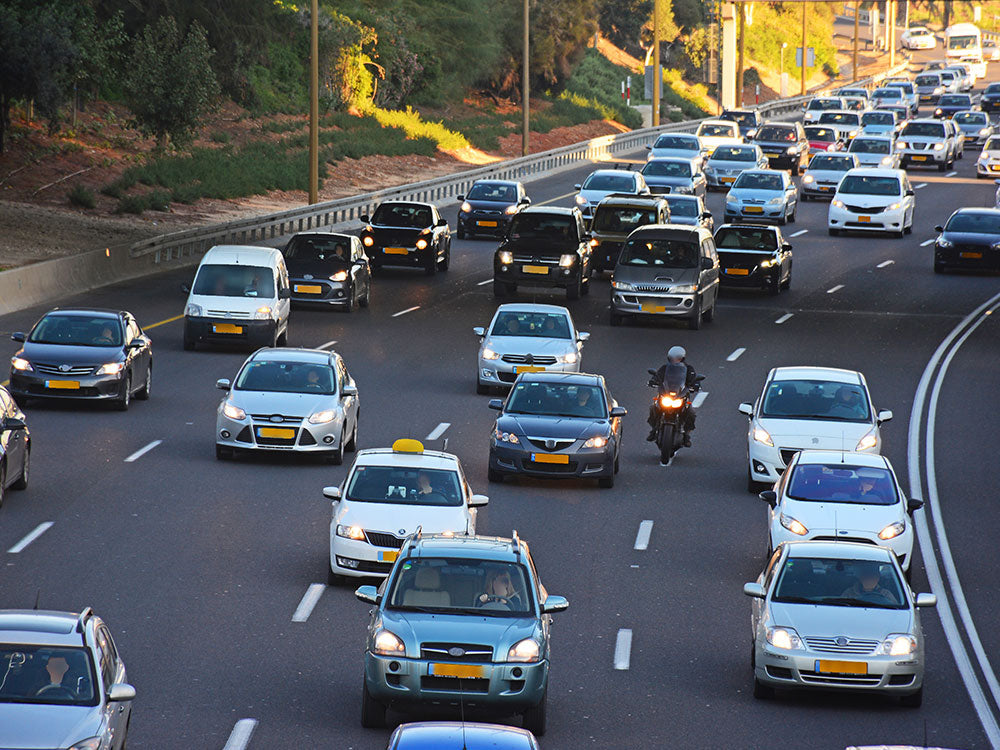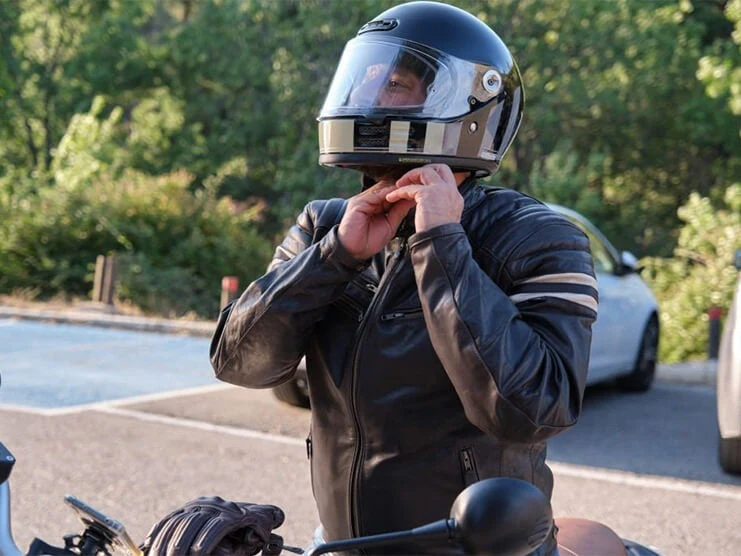Table of Content
A motorcycle clutch is an integral motorcycle part. Unlike motorcycle engines, it has a much simpler build, but it is responsible for delivering power from the engine to the gearbox. A motorcycle clutch is always under stress when riding and will eventually become worn out over time. Read this article to learn how long a motorcycle clutch should last.
1. What is Lane Splitting?
Lane splitting is when you travel atop the dashed line dividing two lanes in slow-moving traffic. Most motorcyclists attempt this when traffic is slowed or stopped during peak traffic hours. Motorcyclists are small enough to slip between larger vehicles, allowing them to bypass traffic. However, lane splitting has benefits and drawbacks. Some countries and states legalize it, while others explicitly state it is illegal according to road laws.
2. How Lane Splitting is Dangerous
Lane splitting can be risky and dangerous for motorcyclists since they can suffer severe injuries. There is often a small space between two vehicles, increasing the risk of motorcyclists colliding with other vehicles. Also, drivers in larger vehicles may not see motorcycles coming up from behind when lane splitting. Motorcyclists who ride heavy motorcycles may have difficulty maintaining balance if they hit another vehicle.
3. Risks of Lane Splitting

Lane splitting is the cause of 15% of all motorcycle crashes. Listed below are the risks of lane splitting:
3.1 Increased Risk at High-Speed
It is safer for motorcyclists to lane split while traveling at a slow speed or matching the speed of traffic. Traveling at high speed gives motorcyclists less time to react if another vehicle suddenly gets in the way.
According to research conducted by the University of California, Berkeley motorcyclists traveling at speeds 15 mph faster than other vehicles often caused accidents. Almost 20% of motorcyclists claimed they were traveling at a speed more than 15 mph than the surrounding vehicles.
3.2 Lane Splitting Can Cause Accidents
According to a study conducted by UC Berkeley, land splitting can be a cause of severe accidents on the road. In most cases found motorcycles turned into other vehicles. Of all the accidents that occur due to land splitting, 34.6% are due to breaking off a side mirror on another vehicle. Half of them result in minor injuries, while 9.9% of them result in severe injuries.
3.3 Lane Splitting is More Dangerous in Heavy Traffic
According to the studies, collisions caused by lane splitting happen more often in heavy traffic during the morning and evening. In heavy traffic, most drivers are in a hurry and there is less space to maneuver between vehicles. There are also more vehicles which can increase the risk of collision. During commutes, 14.9% of motorcycles collided with other vehicles due to lane splitting.
3.4 Less Room to Maneuver
Larger vehicles, like cars or trucks, driving in the center or the edges of the lane can reduce the space available for motorcycles to maneuver when lane splitting. In such cases, lane splitting can cause a motorcycle to accidentally scrape against or crash into the side of another vehicle.
3.5 Vehicles Suddenly Changing Lanes
In long lines of traffic, it is difficult for drivers in four-wheelers to see everything behind them using rearview and side mirrors. If they suddenly decide to change lanes, they may not be able to spot incoming motorcycles' lane splitting until it is too late.
4. Benefits of Lane Splitting
Recent studies have shown that despite the potential dangers lane splitting poses, there are a few benefits:
4.1 Reduce Accidents in Slow-Moving Traffic
In slow-moving traffic, riding between two lanes while matching the speed of surrounding traffic can make it easier for other drivers to spot them and avoid accidents.
4.2 Reduce Fuel Consumption
By moving between lanes, you bypass traffic instead of remaining stuck behind other vehicles, ensuring less wasted fuel consumption.
4.3 Arrive at Destination Faster
Unlike larger vehicles that have to wait for the vehicles ahead to move forward, motorcycles can travel between lanes and keep progressing forward without wasting time.
4.4 Reduce Pollution Caused by Emissions
According to the research, lane splitting can help the environment by reducing emissions produced by motor vehicles stuck in traffic. Moving out of lanes makes way for other traffic and ensures the flow of traffic moves faster.
5. Lane Splitting in the USA

Each state in the USA has different laws regarding lane splitting. Here are further details on traffic laws about lane splitting and which states deem it legal or illegal:
5.1 States Where Lane Splitting is Legal
Some states passed bills that legalized lane splitting. The states that declared lane splitting legal since 2021 include Arizona, California, Utah, Hawaii, and Montana.
California was the first state to legalize lane splitting. When lane splitting, riders can only travel 10 miles per hour faster than surrounding traffic. Motorcyclists cannot lane split near a ramp or a freeway exit.
In Hawaii, motorcyclists can only ride along the left edge of the road to bypass traffic.
Montana and Utah legalized lane splitting with several restrictions.
5.2 States Where Lane Splitting is Illegal
Lane splitting is illegal in 34 states, including Pennsylvania, South Carolina, Washington, Oklahoma, New York, New Mexico, Maryland, Massachusetts, Georgia, Florida, Alaska, Alabama, etc.
5.3 States With No Lane Splitting Laws
In 11 states, there are no laws that cover lane splitting, neither stating it is legal nor illegal. These states include Arkansas, Delaware, Idaho, Kentucky, Mississippi, Missouri, New Jersey, North Carolina, Ohio, Texas, and West Virginia.
6. Lane Splitting in Other Countries
There are other countries that also permit lane splitting, including Austria, Belgium, Brazil, Cyprus, Italy, France, Japan, Poland, Qatar, Spain, South Africa, Sweden, UAE, the UK, and Greece.
7. FAQs
7.1 What is the difference between lane filtering, lane sharing, and lane splitting?
Answer: Lane splitting is traveling between two lanes in the direction of traffic. Lane sharing is sharing a single lane with another motorcycle. Lane filtering is traveling between the lanes at a slower speed compared to surrounding traffic.
7.2 Is lane splitting safer than rushing in heavy traffic?
Answer: In slow-moving traffic, lane splitting is safer. But you cannot travel more than 10 miles per hour than surrounding traffic.
7.3 Why do motorcyclists' lane split?
Answer: Motorcyclists usually lane split to bypass traffic jams and get to their destinations faster rather than wait behind stopped vehicles.
8. Final Words
Various research studies have yielded different results on lane splitting. Lane splitting can be dangerous for motorcyclists who are not mindful of the speed limit. Many factors, such as speed, visibility, spacing, and sudden lane changing could result in a severe crash.
However, by following certain rules, lane splitting can be safer for motorcyclists. In U.S. states like California, lane splitting is now permitted. However, many states still do not consider it a safe practice.
Lane splitting can be dangerous at high speeds but can prove beneficial in heavy traffic jams if you practice caution and travel at a slow speed.
There are several aftermarket motorcycle parts and luggage available at Viking Bags including Crash bars, sissy bars, handlebars, saddlebags, sissy bar bags, and motorcycle trunk bags.












Leave a comment
All comments are moderated before being published.
This site is protected by hCaptcha and the hCaptcha Privacy Policy and Terms of Service apply.